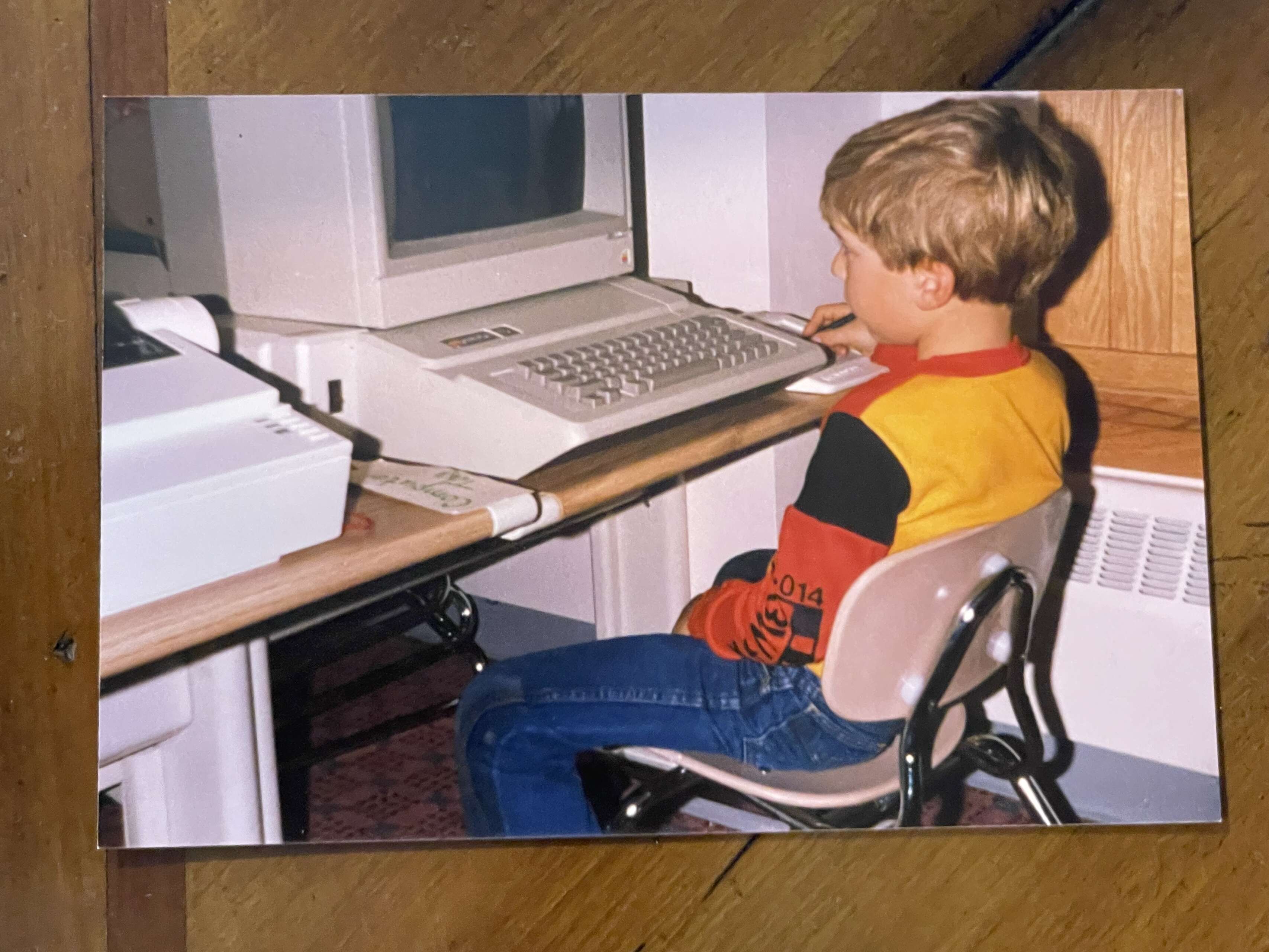
Here's a picture of me in 1986-ish...
There’s a need for explicit instruction on computing still. For a couple decades around the turn of the century, we had solid computer courses and intentional instruction starting in elementary school that threaded through middle school and into high school in most school districts. Now that districts have adopted Chromebooks and iPads, the old computer classes have disappeared.
Some might say that there is no more need for computers in classrooms now that we all walk around with a super computer in our pocket. However, these new devices tend to be more consumption centric. The iPad for instance is a phenomenal device for accessing IXL or Lexia, but the understanding of how a computer works and the wizardry power that real life programming provides is nonexistent in most schools. Swift Playground and other iPad apps can introduce programming and concepts, and tools like Sphero can provide some play structure that introduces basic programming, but there’s nothing quite like actual programming, fiddling with a full computer, actually building a web server from scratch, writing some HTML, and then sharing an IP address around to your friends to giggle at.
We are in an interesting time right now, where computers have gotten so cheap that they can almost be considered consumable devices. A Raspberry Pi for instance can be put together as a functioning desktop computer for less than $100, including the keyboard, mouse and hand-me-down display. Mini-computers are now incredibly powerful and can be purchased for under $400.
Regarding the operating system, it's important to recognize that the vast majority of the Internet runs on Linux, and there’s never been a better time to enter into the Linux world, especially for instructional purposes. Apple Macintosh and Microsoft Windows provide a structured operating system that is fast approaching an iOS style with cloud services, AI, and all kinds of management built into the system that happens without anyone knowing what's happening. Both companies have drifted away from the old computer model of unbridled openness and opt rather to obfuscate the way the computer works as much as possible (beyond just the user interface). Linux however brings you back to those old days of hardware and software doing what the owner tells it to do. No mystery for those who want to know the answer, just a raw computer and software.
Chrome books and iPads have their place in modern instruction, but let's bring back the computer. Let's find ways to help our students learn to be masters of these devices.
Student as computer operator. Student as computer wizard. Student as master of their cyber domain.
Student as learner, not simply a user.